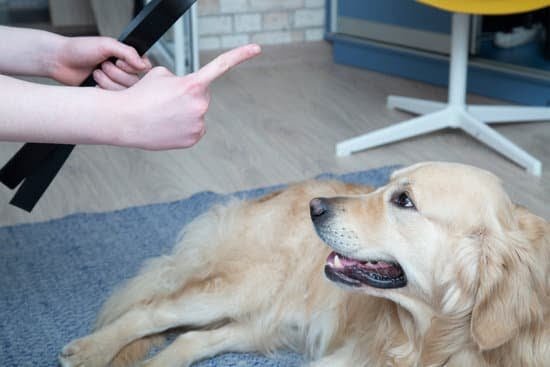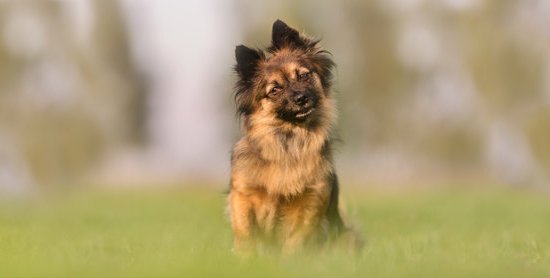Introduction to Tracking Dogs Training
Tracking dogs training is a discipline that has been used in many applications throughout history. It involves teaching dogs to identify and follow the scent of a person, animal, or object. This type of training is often used by law enforcement agencies to track criminals or search and rescue operations looking for lost persons. Additionally, tracking dogs are also utilized in conservation efforts to survey wildlife habitats and identify animal species – allowing human observers to keep their distance.
The most important aspect of tracking dog training is a strong bond between dog and handler; thus making breeds with an eagerness to please humans such as German Shepherds, Belgian Malinois, Labradors, Golden Retrievers, border collies, and beagles ideal for such purposes. Training usually begins at 4-6 months when puppies are still impressionable and learns basic obedience commands; however the actual scent detection may not begin until the puppy is at least 12 months of age.
The main benefits of tracking dogs training include developing team problem solving skills between handler and dog; advanced communication through body language; physical exercise for both parties; socialization between different types of animals; closer bond between handler and pup; increased agility/ coordination for accuracy during course navigation; as well as improved concentration abilities due to repetition during practice sessions.
The Benefits of Tracking Dogs Training
Tracking dogs training provides many unique benefits for both the handler and the dog. Through tracking, dogs gain improved agility, as they become proficient at instinctive behaviors such as following scent trails. Obedience is also improved, as tracking requires precise commands from the handler and precise execution from the dog. Improved communication between handler and dog strengthens the bond between them through a better understanding of each other’s needs, commands and expectations. The physical and mental well-being of both handler and dog can be enhanced through daily exercise, playtime and training sessions. Training sessions provide an educational environment for both parties to practice their skills in a rewarding and challenging setting. Through consistent training, problem solving situations are presented in order to increase understanding and ensure success during hunting trips or competitions. Furthermore, by becoming accustomed to tracking environments including weather conditions such as extreme heat or cold, wind or rain, a tracker becomes more adept when in search of prey. Tracking increases confidence in handlers while instilling a sense of pride that is only earned when hard work pays off with a successful hunt or competition outcome
Essential Equipment for Training
In order for a tracking dog to learn the skills necessary for tracking, appropriate equipment and training are essential. A suitable harness that fits well is important for control, as well as leashes of varying lengths and materials depending on the surface being tracked on. Tracking collars are another key piece of equipment because they provide an audible signal when the dog is on point, while bells often serve this purpose as well. Flags and poles should be used to mark areas where a track has been laid or where there could be potential hazards along the track. It’s also important to make sure water bowls are always within easy access of searching dogs so they can refuel during longer tracks.When training your dog in tracking you may want to consider items such as scent articles, measuring tapes (for measuring track lengths/widths), and articles with strong scents to work on dialogues between handler and dog (dog must indicate when it’s found a certain marked object). Other items may include solid objects such as gloves, police hats or even conspicuous pails that are placed at various points throughout a track. In any case, having the right equipment for your tracking dog will greatly increase their success and efficiency.
Types of Training
Tracking dogs training refers to the techniques used to teach and train a dog to locate and follow a specific scent, visual trail, or indication. Depending on the specific needs of the person or organization training and working with the canine, different types of tracking dogs training can be employed. These types may include tracking by scent, which entails teaching a dog to recognize and follow an odor; tracking by sight, wherein an animal is trained to recognize a particular object such as clothing that has been worn by someone under instruction – for instance, law enforcement officers use this type of tracking when looking for criminals who are at large; trailing is another skill in which dogs are taught to identify a particular route plotted in advance; searching teaches animals to cover wide areas where they must identify targets often set out beforehand; area search focuses on utilizing all available clues surrounding an area where something is suspected or witnessed; distraction techniques are important as they allow the dog to stay focused in the presence of any interference like ticking clocks or loud noises.
Tips and Techniques for Tracking Dogs Training
Tracking dogs training takes specialized techniques that allow you to help the dog learn the desired behavior. To accomplish this, step by step directions should be broken down into very small parts. The trainer should then use a reward system and/or treats to create positive reinforcement for successful tracking efforts. Once the dog demonstrates an understanding of each of the commands, simple incentives should be presented to encourage continued progress. This will also help reinforce any learned behavior as well as build an association between good behavior and rewards over time.
To further enhance the tracking dog’s learning experience, it is recommended that lure courses be used in addition to traditional methods. Lure courses involve setting up paths that require the dog to follow several steps in sequence with predetermined rewards available along the way for reaching certain milestones. This will give your tracking dog an opportunity to practice different techniques within a controlled environment before being taken into new areas with more complextracking taskshttps://www.purina.co.uk/dogs/essentials/trainer-tips-when-teaching-your-dog-to-track.
Potential Problems and Obstacles in Tracking Dogs Training
One potential problem in training tracking dogs is anxiety, especially if the handler is an inexperienced trainer. In some cases, anxious dogs may be more likely to become distracted by their environment and lose focus on the task at hand. Similarly, lack of consistency in training can hinder progress as well as cause confusion for a dog that may be trying to pick up a new skill. This can result in violations of commands that may lead to further distraction. If there is conflict between the handler and the dog during the training session it may create tension or unease which could make it difficult or unproductive to continue with the activity. Lastly, environmental distractors such as other animals, noises, smells and people can also create difficulties while attempting to train a tracking dog.
Expert Q&A for Tracking Dogs Training
Q: What has been your experience with tracking dogs training?
A: I’ve been professionally training and handling tracking dogs for more than 10 years. I have trained a wide variety of dogs including German Shepherds, Rottweilers, Bloodhounds, and many others. I have seen great success in teaching dogs to track scents over a long distance, find hidden objects, even navigate difficult terrain with ease and accuracy. My experience has been that with the right training program tailored to each individual dog’s abilities, these animals can be trained to reliably follow a scent path. They can even recognize different terrain features such as water bodies, roads, and buildings which helps them stay on the right path. With proper motivation and reward-based reinforcement methods, tracking dogs can become ready for any search mission with confidence.
Conclusion
The use of trained tracking dogs has been an invaluable resource in law enforcement, search and rescue operations and environmental conservation. Their highly advanced sense of smell and tireless work ethic, combined with their focused level of training, make them an indispensible tool in tracking individuals or objects over long distances and in difficult terrain.
Particularly impressive is the ability of these specialized dogs to pick up incidental scents that people have left behind as well as old odors from hours, days or even weeks ago. This form of scent-tracking is especially important when locating lost persons who may be hiding from rescuers or searching for victims of crime when a primary crime scene may not exist.
Tracking dogs also provide a degree of success that humans alone are unable to achieve thanks to their superior hunting skills. These qualities ensure that tracking teams are successful in finding their targets at all times – a valuable asset for any law enforcement agency or search-and-rescue team looking for timely results.
In conclusion, tracking dogs are an invaluable resource for those working in law enforcement, search and rescue and conservation. Using their unique olfactory skills to pick up long term scents and their highly trained hunting abilities they can confidently and efficiently locate missing persons – offering invaluable support to efforts where human success can be limited by time or terrain conditions.

Welcome to the blog! I am a professional dog trainer and have been working with dogs for many years. In this blog, I will be discussing various topics related to dog training, including tips, tricks, and advice. I hope you find this information helpful and informative. Thanks for reading!





